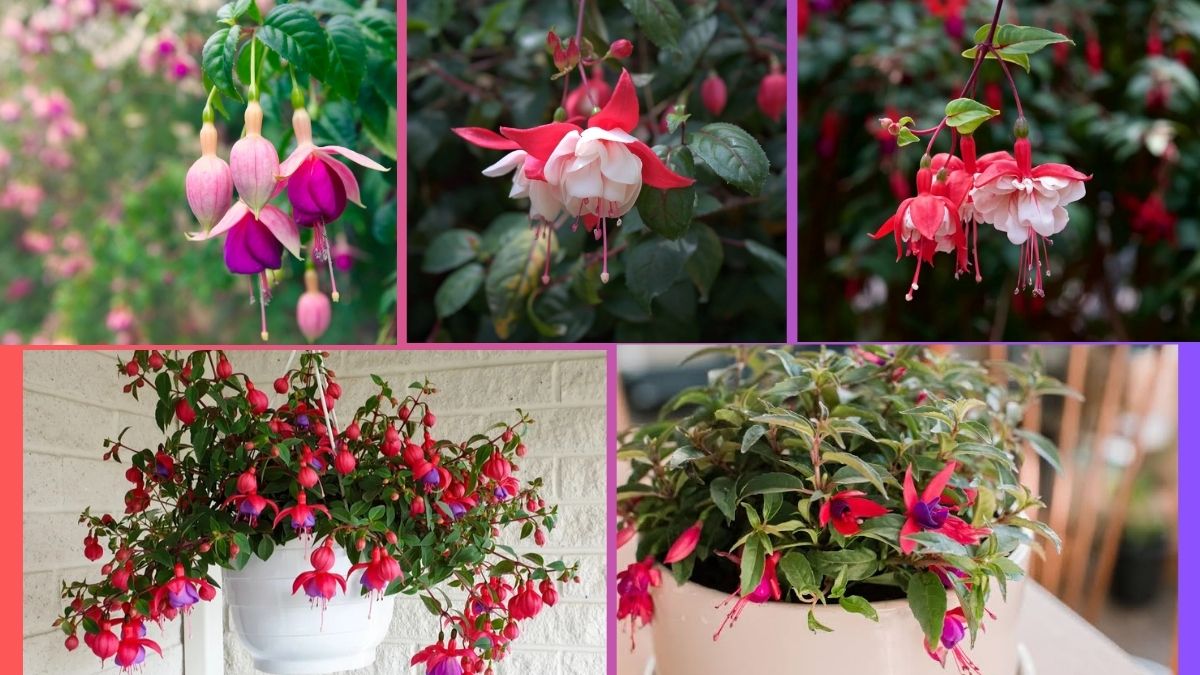Fuchsia plants are among the most enchanting ornamental plants available to gardeners and plant lovers. With their vivid, drooping, bell-shaped flowers in shades of pink, purple, red, and white, fuchsias bring elegance and vibrant color to hanging baskets, garden borders, patios, and indoor containers. Native to Central and South America, New Zealand, and Tahiti, these plants thrive in cool, moist environments with consistent watering.
One of the most important aspects of caring for a fuchsia is providing the right amount of water. While they love moisture, fuchsias are also sensitive to waterlogged soil. In this guide, we’ll cover how often you should water a fuchsia, the factors that influence its watering needs, signs of improper watering, and essential tips to keep your fuchsia blooming beautifully.
Understanding the Natural Habitat of Fuchsia
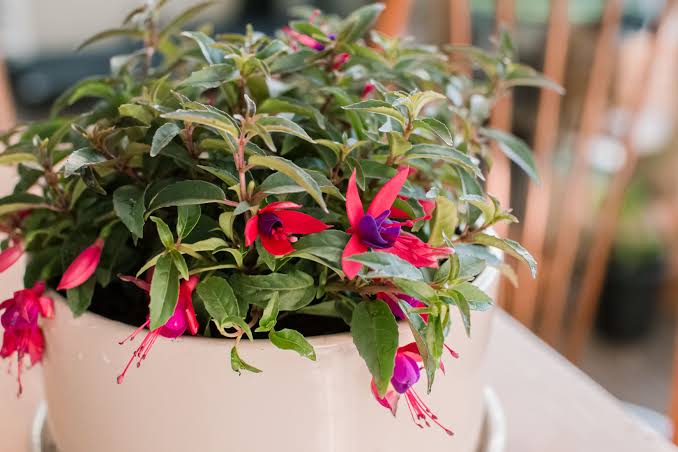
In the wild, fuchsias are found in:
- Moist, temperate forests
- Cloud-covered mountains
- Shaded or partially shaded areas with high humidity
- Rich, well-drained soil
These natural conditions give clues to their preferred environment: moist, well-draining soil and consistent watering without prolonged dryness or waterlogging.
How Often Should You Water a Fuchsia?
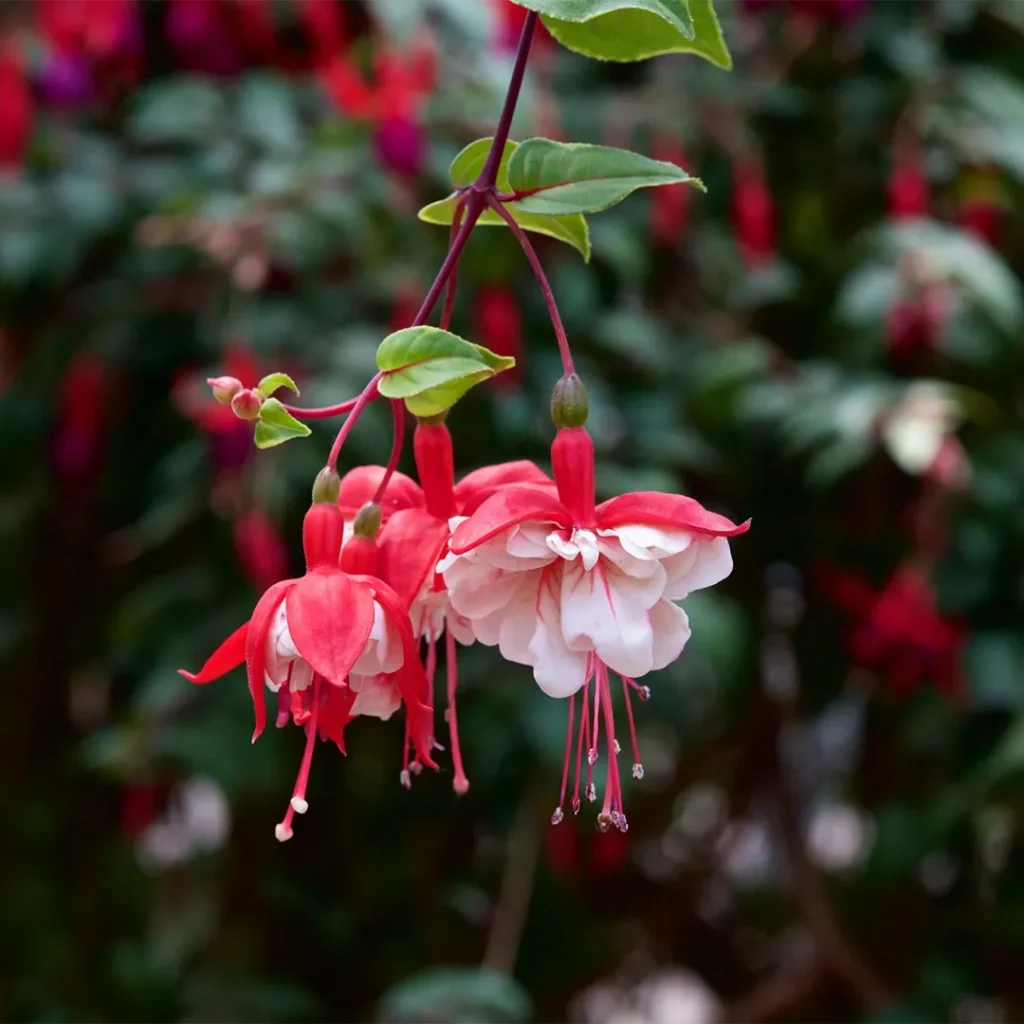
1. General Watering Schedule
A general guideline for watering fuchsias is:
- Water every 2–3 days during the growing season (spring to early fall)
- In cooler months (fall and winter), reduce to every 5–7 days or when the topsoil feels dry
Fuchsias grown in hanging baskets and containers usually need more frequent watering than those planted in the ground.
Key Rule:
Keep the soil evenly moist but not soggy, allowing the top 1 inch of soil to dry slightly between waterings.
Factors Influencing Fuchsia’s Watering Needs
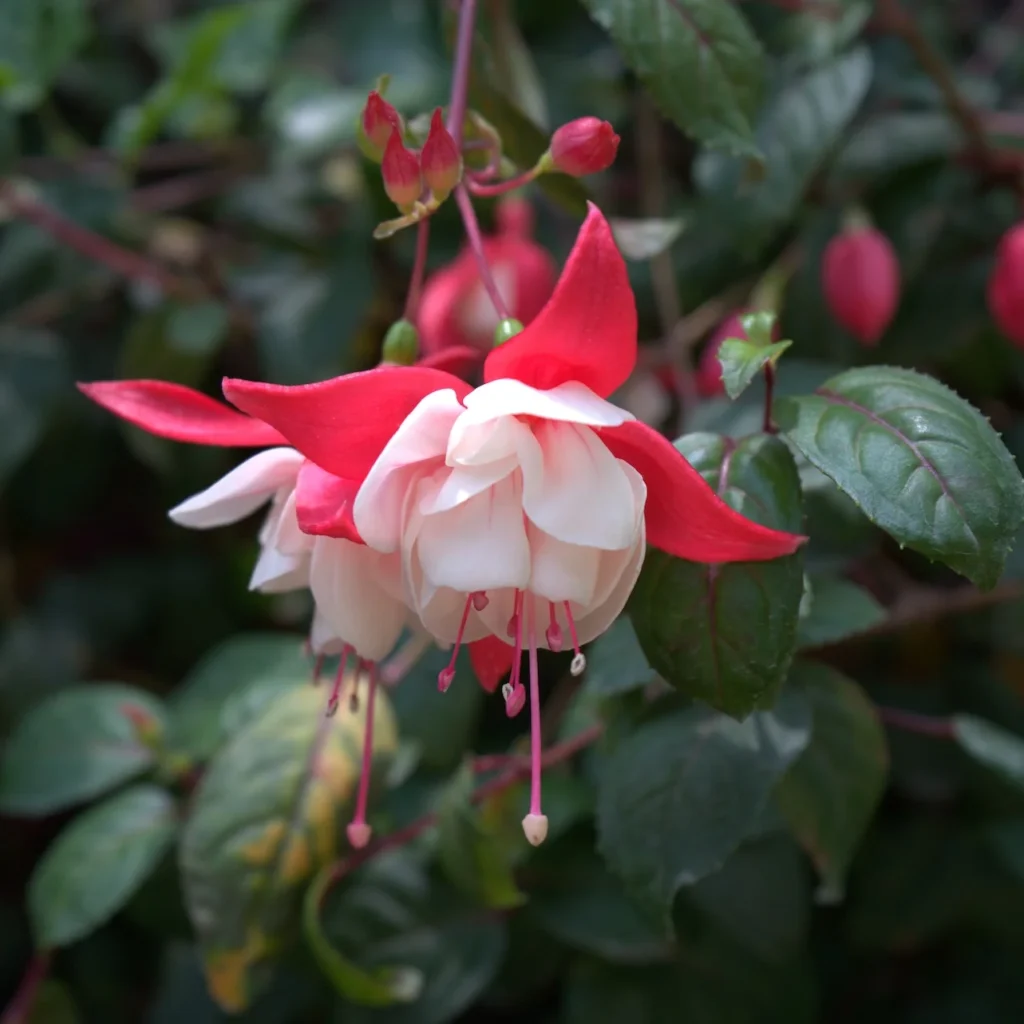
Several environmental and cultural factors influence how often you should water your fuchsia. Understanding these will help tailor your watering routine to your plant’s conditions.
1. Temperature and Season
- Warm temperatures (above 24°C/75°F) increase evaporation and transpiration, requiring more frequent watering.
- Cooler temperatures (below 18°C/64°F) slow down plant activity and reduce water needs.
Tip: In summer heat, you may need to water daily for hanging baskets.
2. Humidity
Fuchsias thrive in moderate to high humidity (50–80%):
- In dry, arid conditions, water evaporates faster, requiring increased watering.
- In humid environments, soil retains moisture longer.
Tip: Mist foliage occasionally in dry conditions but avoid over-wetting the leaves.
3. Light Exposure
- Full sun exposure increases evaporation and water consumption.
- Partial shade or dappled sunlight helps retain soil moisture.
Tip: Fuchsias in full sun need more frequent watering than those in shaded spots.
4. Soil Type and Drainage
Fuchsias prefer moist, fertile, well-draining soil rich in organic matter:
- Loamy soil mixed with compost and perlite is ideal.
- Avoid dense, clay-heavy soils that retain excessive moisture.
Tip: Good drainage is essential to prevent root rot, especially in containers.
5. Container vs. Ground Planting
- In hanging baskets and containers: Soil dries out faster, requiring watering every 1–2 days in warm weather.
- In garden beds: Water every 2–3 days depending on weather and soil type.
Tip: Use moisture-retentive potting mixes for containers to reduce watering frequency.
How to Check Soil Moisture Before Watering
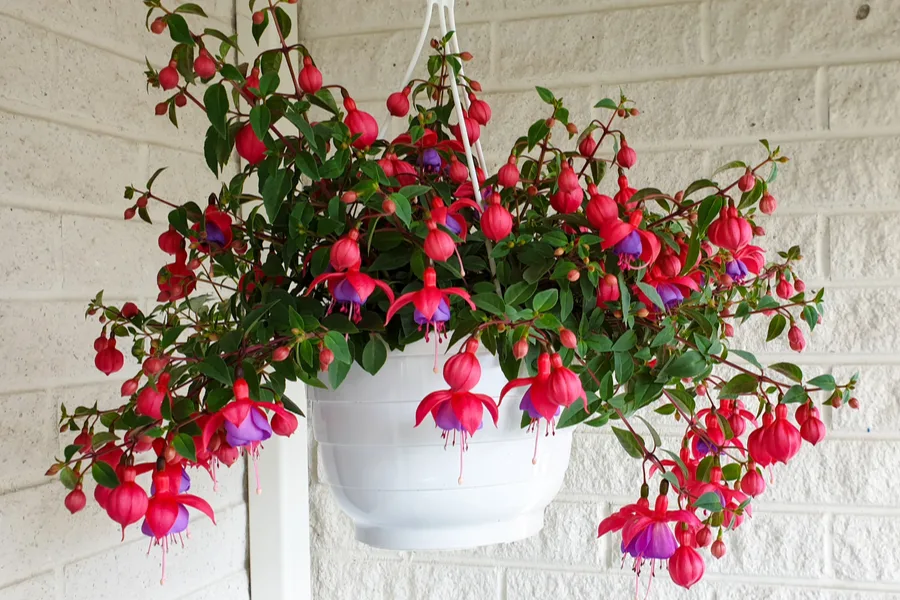
Before watering, always check soil moisture using one of these simple techniques:
1. Finger Test
Insert your finger 1–2 inches into the soil:
- If the soil feels dry at that depth, it’s time to water.
- If it feels moist, wait another day.
2. Moisture Meter
For accuracy, use a moisture meter to check soil moisture at the root zone.
3. Visual Inspection
- Dry soil appears lighter and may pull away from the sides of the pot.
- Moist soil remains darker and feels cool to the touch.
Signs of Overwatering and Underwatering
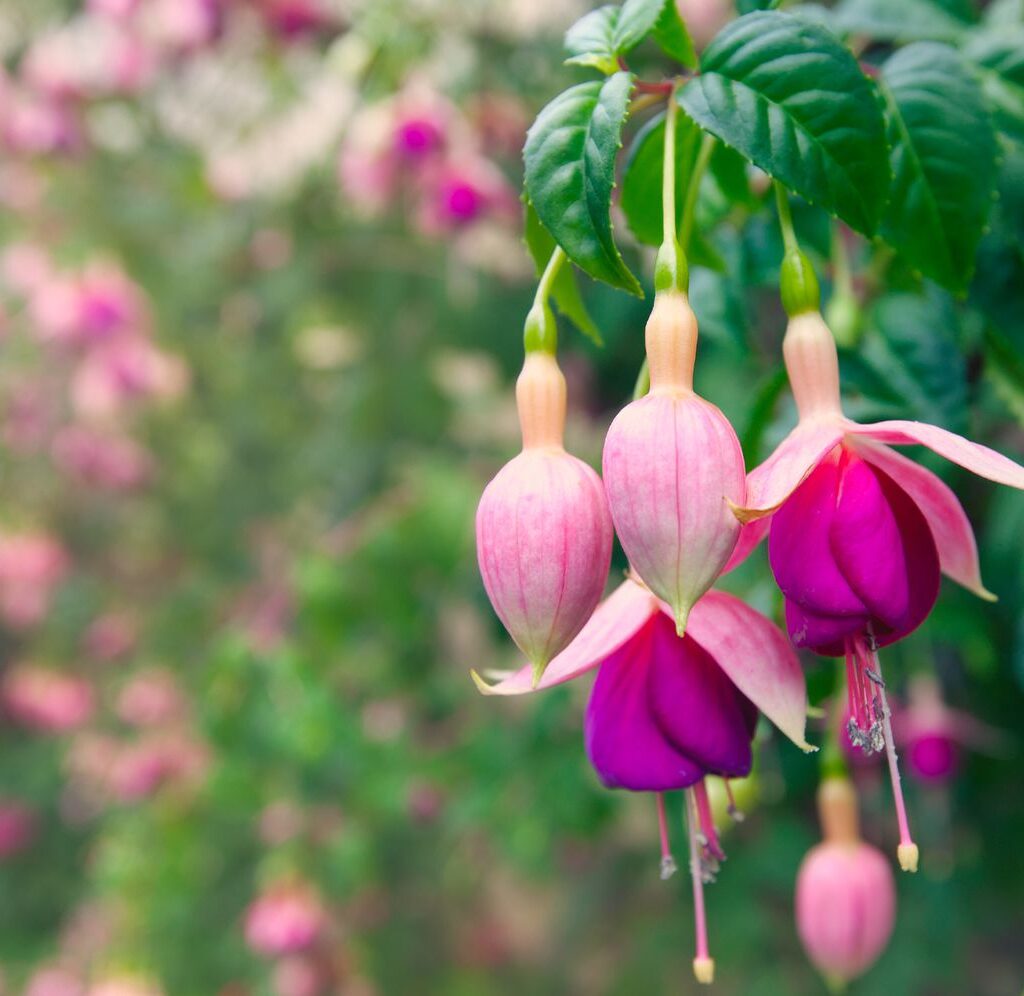
Identifying signs of watering mistakes early can help prevent long-term damage.
1. Signs of Overwatering
- Yellowing, wilting leaves despite wet soil
- Leaf drop
- Mushy stems and roots
- Foul-smelling, soggy soil
- Root rot in severe cases
Solution:
Stop watering, let the soil dry, improve drainage, and remove any affected plant parts.
2. Signs of Underwatering
- Wilting, drooping leaves
- Dry, crispy leaf edges
- Stunted flower production
- Soil pulling away from the pot’s edges
Solution:
Water deeply and consistently, ensuring thorough saturation of the soil.
Best Watering Techniques for Fuchsia
1. Water Deeply and Evenly
Ensure water reaches the entire root ball:
- Water slowly at the base until excess runs from drainage holes.
- In garden beds, soak the soil deeply rather than frequent light sprinklings.
2. Avoid Overhead Watering
Water directly at the soil level to prevent foliage diseases caused by wet leaves.
3. Use Room-Temperature Water
Cold water can shock roots and affect growth.
Tip: Use collected rainwater, filtered water, or tap water left to stand overnight to dissipate chlorine.
Seasonal Watering Guidelines
| Season | Watering Frequency | Additional Tips |
|---|---|---|
| Spring/Summer | Every 1–3 days | Increase watering during hot, dry spells; check hanging baskets daily |
| Autumn/Winter | Every 5–7 days | Reduce watering; avoid waterlogging; maintain slightly moist soil |
Common Watering Mistakes to Avoid
- Allowing containers to dry out completely in hot weather
- Watering too frequently without checking soil moisture
- Using poorly draining soil mixes
- Leaving water sitting in saucers under pots
- Watering overhead, increasing disease risk
Extra Care Tips for Thriving Fuchsias
- Mulch around outdoor fuchsias to conserve soil moisture and regulate temperature.
- Feed every 2–4 weeks during the growing season with a balanced, water-soluble fertilizer.
- Pinch back stems in spring to encourage bushy growth and more flowers.
- Repot every 1–2 years for container-grown plants to refresh soil and prevent root binding.
- Move hanging baskets and potted fuchsias to partial shade during extreme heat to reduce water stress.
Conclusion
Fuchsias are captivating, graceful plants that thrive when their water needs are met consistently. Though they adore moisture, they dislike waterlogged soil, making it crucial to strike the right balance.
As a general rule, water your fuchsia every 2–3 days in warm months, reducing to every 5–7 days during cooler weather. Hanging baskets may require daily watering in the heat. Always check soil moisture before watering and adjust frequency based on temperature, humidity, light, and planting method.
By observing your plant’s signals and practicing thoughtful watering techniques, you’ll enjoy a lush, flowering fuchsia that adds color and charm to your garden, patio, or home throughout the growing season.
